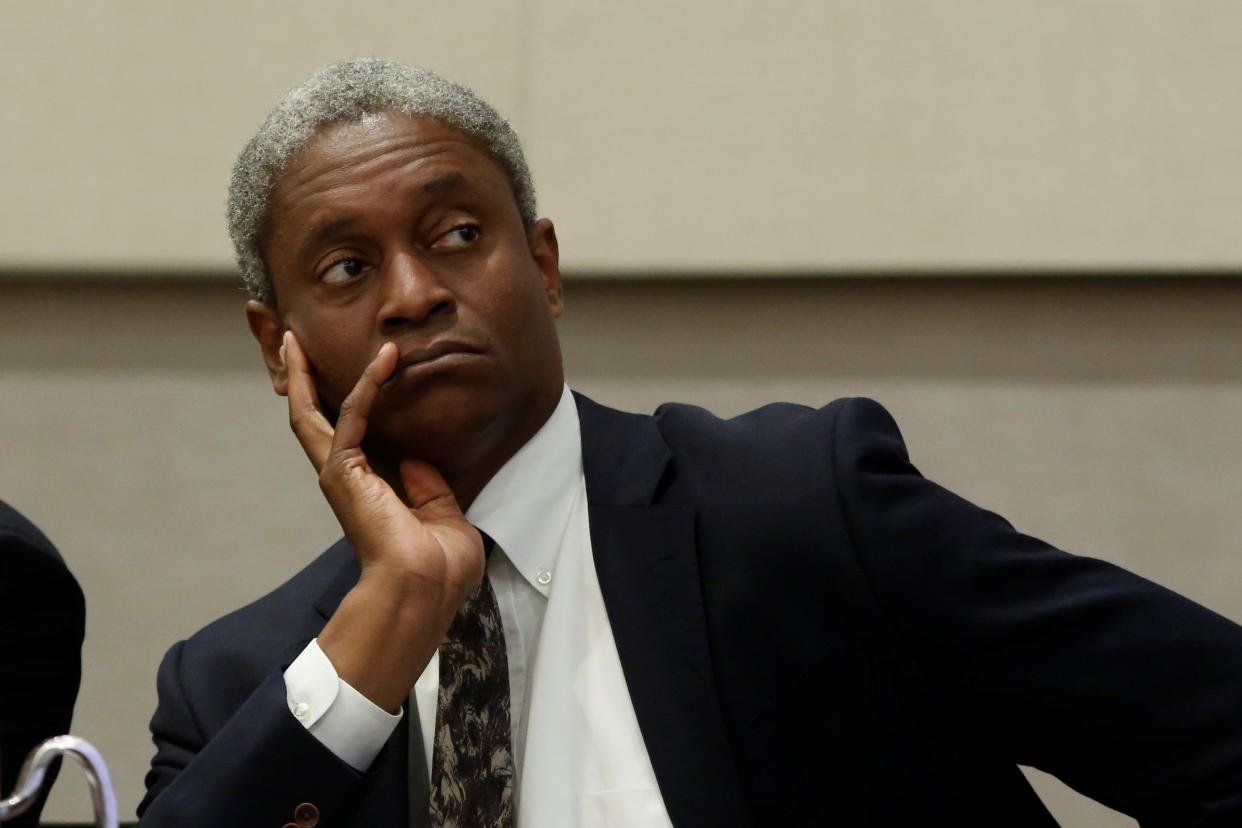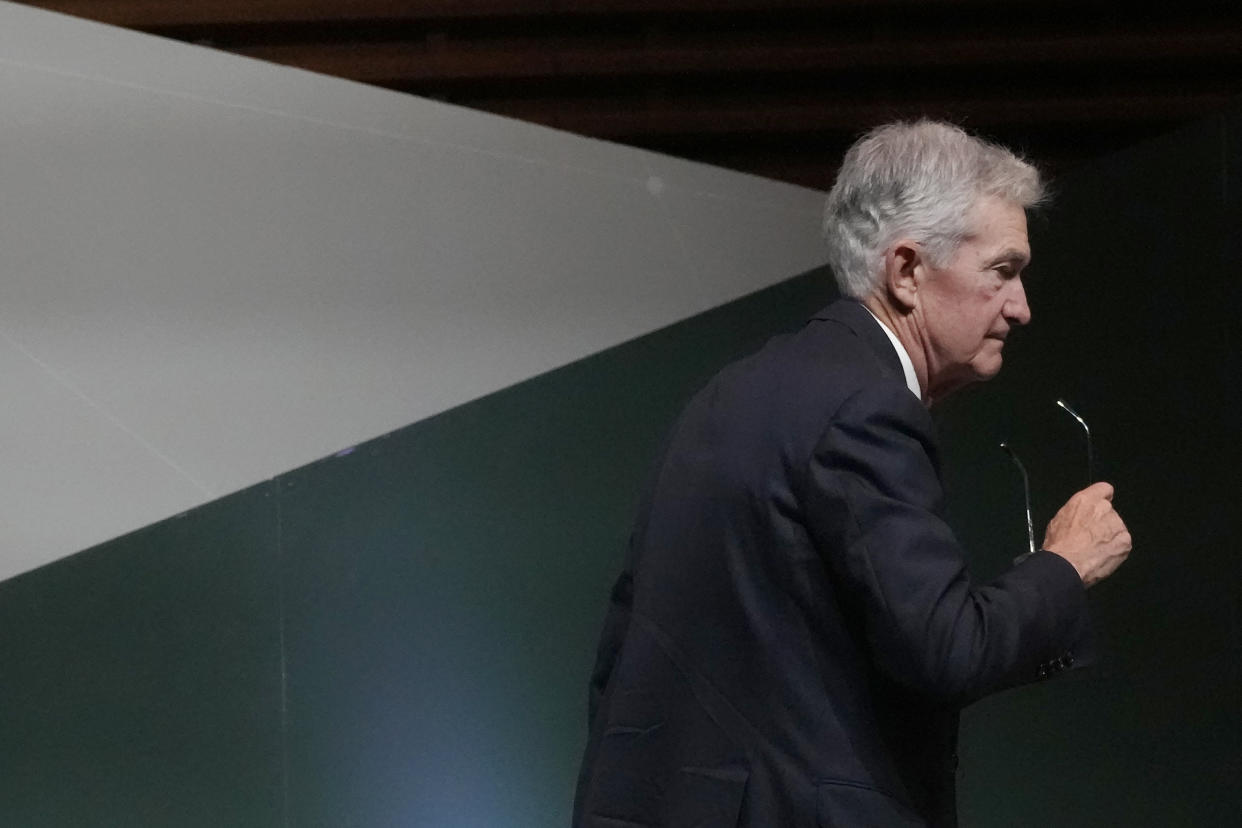Fed's Bostic still expects 1 rate cut in 2024 but doesn’t rule out 0 or 2
Atlanta Fed president Raphael Bostic still expects one rate cut in 2024, but is not ruling out the possibility of two or zero depending on the direction of the US economy and inflation.
"At this point, I think it's one. But as months pass, I may move to two or I might move to zero and we'll just have to see where the chips fall," Bostic, a voting member of the Fed's interest-rate setting committee, said Tuesday in an exclusive interview on Yahoo Finance LIVE.
If the economy continues to accelerate, Bostic said he can’t "take off the possibility that rate cuts may even have to move further out.”
But if inflation starts to decline like it did during the second half of 2023 or if there is "pain" in the job market, he said he could pull forward his inflation and policy outlook and vote for cutting rates sooner.
When asked if that meant more than one rate cut was possible this year, he said "it's possible."

The new comments from Bostic come as investors become increasingly concerned that hot economic data and mixed commentary from some Fed officials could cause the central bank to scale back the number of interest rate cuts this year.
One or two rate cuts in 2024 now seem to be more possible to traders than the median of three estimated by Fed officials at their last meeting in March.
And traders have been reducing their odds of a first cut in June, which now stand at roughly 58%, and were as low as 49% in early Tuesday morning trading.
Their concerns follow a strong labor report Friday that showed the US economy generated more jobs than expected in March while the unemployment rate ticked lower and wage growth remained steady, putting the labor market on firmer footing than many economists had predicted.
Other Fed officials have poured cold water on near-term hopes for an easing of monetary policy.
"I believe it’s much too soon to think about cutting interest rates," Dallas Fed president Lorie Logan said in a speech Friday. "I will need to see more of the uncertainty resolved about which economic path we’re on."
Fed Governor Michelle Bowman also voiced concerns Friday, even saying the Fed may need to raise rates at a future meeting if progress on inflation stalls or reverses. Her baseline outlook, however, is that the Fed will still lower rates this year.
Some Fed officials have offered assurances in the last week that the outlook had not changed, including Jay Powell.

The Fed chair repeated his assertion in a speech Wednesday that central bank officials expect to lower rates at "some point" this year.
For the second time in one week, he also emphasized that the economic picture was largely the same despite some hotter-than-expected inflation readings at the start of the year.
Additional certainty came from comments made by Cleveland Fed president Loretta Mester and San Francisco Fed president Mary Daly, who stuck with a prediction for three cuts in 2024 — echoing another recent estimate from Chicago Fed president Austan Goolsbee.
'A welcome development'
Bostic’s new comments Tuesday come ahead of a key reading on the consumer price index for the month of March due out Wednesday.
Economists expect "core" CPI, which excludes volatile food and energy prices, will clock in at 3.7% for the month, down from 3.8% seen in February and 3.9% in January and December.
Bostic said if that number comes in line with expectations it would be a "welcome development."
"It would suggest that inflation is continuing to move closer to our target," said Bostic. "My outlook has always been that through this year, we would see some bumpiness in the trajectory of inflation."
But Bostic says that the Fed will need to keep watching to make sure that that trend continues given data in the first couple months of the year suggesting that inflation could be stalling.
Specifically he’s looking for a broad-based decline in components of a basket of inflation, not just the top line number.
The distribution of price increases now, Bostic said, shows too many areas far above the level of 5% than what are typically seen in normal times.
“I really want the totality of those measures to be telling that we're getting back to a normalized level where 2% is likely to happen really quick.”
Bostic said he thinks it’s possible that the outlook for economic growth could be upgraded again this year given that the US economy has been “incredibly resilient.”
But he said his baseline outlook is that the economy will slow this year, though not nearly as much as anticipated at the beginning of this year.
Click here for in-depth analysis of the latest stock market news and events moving stock prices.
Read the latest financial and business news from Yahoo Finance
